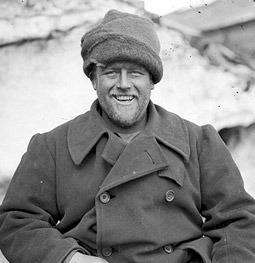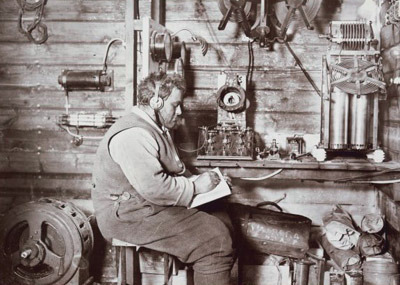Radio’s polar pioneer
Wednesday, 17 April, 2013
In the early days of Antarctic exploration, establishing reliable communications with the outside world could mean the difference between life and death. Australian Walter Hannam was one of those who led the way.
It’s perhaps not a name that immediately springs to mind when thinking about the history of radio, but Walter Henry Hannam was an Australian pioneer of Antarctic radio communications during the Mawson years.
Hannam, known as ‘Blubbery’ because of his 101 kg weight, was the first person to establish radio communications from Macquarie Island to ships in waters around Australia and New Zealand, and to Melbourne, Sydney and Wellington.
Having gained a science diploma in Sydney, the young Hannam joined his father’s gas and hydraulic engineering company. Over the next 11 years or so he acquired a lot of knowledge that would become useful to him in Antarctica.

From 1911 to 1912 Hannam served as the wireless engineer on Douglas Mawson’s Australasian Antarctic Expedition and during this time set up and maintained the wireless telegraph system on Macquarie Island and at Mawson’s base camp.
Barrels were used to unload the equipment from the research vessel Aurora onto Macquarie Island. Sealers provided much help and their flying fox was modified to help move the equipment. Four radio masts were floated ashore and Hannam chose the site for their erection.
For two summers and a winter Hannam was the wireless operator and mechanic at Main Base in Antarctica, where he used a Telefunken 1.5 W transmitter to send Morse code signals, but reception was only intermittent. On 25 September 1912, the first successful message was sent from Macquarie Island to the Queen’s Domain station in Hobart.
A month or so later, a crew of three re-erected a mast that had been laid waste by 32 km/h winds. The following year, Sidney Jeffryes, who succeeded Hannam, modified the radio link into a two-way system, which became reliable enough to report the deaths of Belgrave Ninnis and Xavier Mertz, along with Mawson’s survival. In fact, it was Ninnis and Mertz who always came to the aid of Hannam when he wanted a radio mast guy rope replaced or some other task requiring many hands.

But Hannam was more than just a radio man. In 1929, he developed a rapid electric water heater that became widely adopted. One story says that this innovation came as a result of Walter being dirty and unable to wash for four days; he disliked the feeling so much that he vowed to develop a means of quick hot water and his heater was the result.
Hannam was a strong believer in radio communications, particularly for Australia’s security following World War I. He was a founder member of the Wireless Institute of Australia (WIA) and for a time was its secretary. He was awarded the Polar Medal in 1914 for his services in Antarctica and three small islets in Commonwealth Bay are named after him. He died in 1965 at the age of 80.
$5m grant to globalise Zetifi's Smart Antenna platform
Zetifi's patent-pending technology transforms antennas from passive components into...
NBN Co and Project Kuiper bring LEO satellite broadband to Aust
NBN Co and Amazon will deliver high-speed, wholesale fixed broadband to customers in regional,...
Optus-led consortium to build a sovereign LEO satellite
The project marks a significant step forward for Australia's capabilities in space-based...





